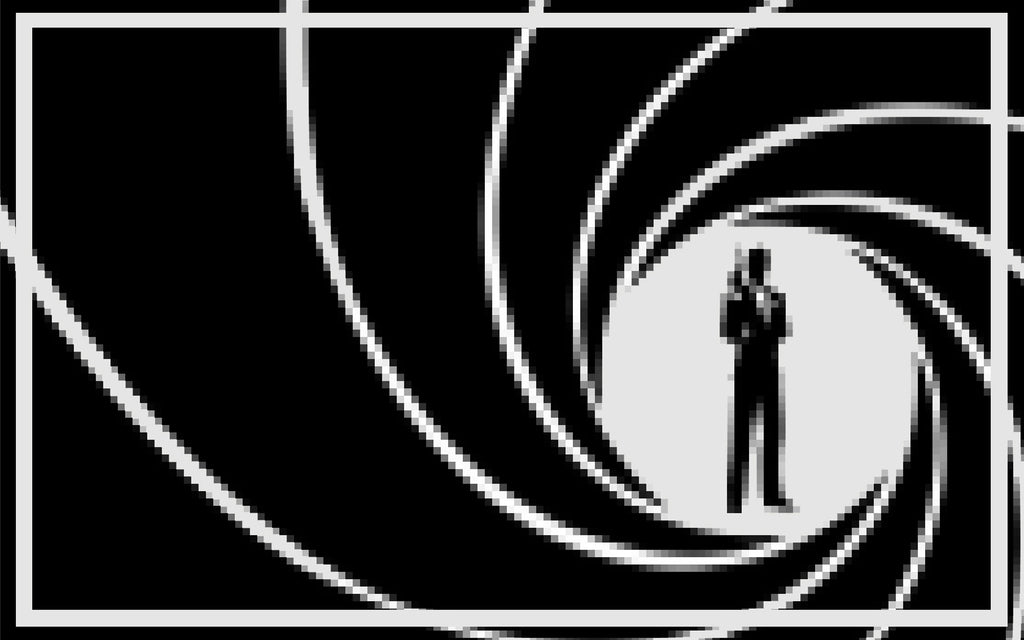

Game composer Chase Bethea highlights some examples of the '007 chord progression' popping up in classic video game music.
By Chase Bethea
Something has been catching my ear in certain older Japanese video games scores, and I’ve got to share it.
There are few, if any, chord progressions more iconic than that which kicks off John Barry’s iconic arrangement of Monty Norman’s “The James Bond Theme”, popularised by the 1962 film Dr. No (much legal wrangling has occurred around the authorship of the music.)
I don’t know whether this repeated chord sequence appeared prior in the musical canon, but it has since spread like wildfire among Japanese video game composers in particular.
Here’s a brief bit of analysis of this well-known passage, and how it has leaked into video games.
Duuum (ba) duuum (ba) duuum (ba) duuum (ba)...
The chord progression in the key of E minor goes something like this (don't worry if you're a music notation layman):
Emin7 | E9#5 | E6/9 | E9#5
The second and fourth of these are especially flavoursome, because they don’t go in the typical direction that music theory would suggest they should.
The most significant thing about this sequence is that it maintains both a sense of movement and tension — better in certain circumstances than a long, held bass note, for instance. This seems to suit battle music or serve as underscore for particularly dangerous levels.
A miserable little pile of secret (agents)
One can’t help but vibe along to Michiru Yamane’s soundtrack to Castlevania: Symphony of the Night. As you defeat hordes of enemies, your ear might catch a few instances of the 007 chords buried deep within the score.
For instance, check out “Dance of Gold” around the 18 second mark:
(Key: F minor) (Notes: C, C#, D, C#)*
It also appears in “Marble Garden”, particularly from around 20 seconds:
The progression appears in a joining passage around 29 seconds in “Remilia’s Theme” from 2002 schmup Embodiment of Scarlet Devil:
(Key: B minor) (Notes: F#, G, G#, G)
However conscious or not composer Kenji Yamamoto was of the Bond connection, he evidently felt that the chord sequence helped set the mood for the Cell round of Dragonball GT Final Bout. It’s a slower use of the sequence, starting around 12 seconds:
(Key: C# minor) (Notes: G#, A, A#, A)
The name’s Link... Just Link.
Here are two creative examples, composed in different ways.
I believe the following pieces are in modes, (a musical scale that raises or lowers notes within the octave to create new tonality), specifically the mode of Melodic Minor Mixolydian, which follows the scales degrees of 1, 2, 3, 4, 5, flat 6, and flat 7:
The chord progression appears throughout the entirety of “Windmill Hut” from The Legend of Zelda: Ocarina of Time as an ostinato. With the opening theme being P5 to P4 (Perfect 5th - Perfect 4th) interval, it gives the music a sense of momentum that complements the gameplay. Although the first two notes are a whole tone apart, the feeling and movement is still achieved.
(Key: D minor) (Notes: D, E, F, E)
The composer of the iconic Pokémon series, Junichi Masuda, is no stranger to masterful writing techniques. The chord progression in “Last Battle (vs Rival)” from Red/Blue also differs slightly from the 007 progression thanks to a whole tone step from its second to third note, but it still manages to maintain the same aural intensity.
(Key: E minor) (Notes: E, F, G, F )
Speaking of Red and Blue, “Flying Battery Zone (Act 1)” from Sonic & Knuckles — composed by one of, or perhaps a combination of Howard Drossin, Sachio Ogawa, Tatsuyuki Maeda and Jun Senoue — leans on the 007 progression hard in the second part of the main musical phrase.
James Bond’s chord progression will return...
I don’t think this particular chord progression, associated with James Bond, is being used as a winking reference — it seems simply to be employed when menacing things are occurring. After all, the espionage and action of Bond films is about tension and release, and there’s something about moving in semitones that creates that feeling of tautness.
Has this chord sequence ever caught your ear in other media? Chances are, after reading this, you’ll probably pick up the odd use in classic video games and beyond
______________________________________________________
Chase Bethea is an award-winning video game composer – www.chasebethea.com | Twitter: @chasebethea | Spotify artist page | YouTube page

